
Blog
This section is a running developer’s journal. It shows how I approach planning, iteration, and problem-solving throughout my projects at FIEA.
November 19th, 2025
Sandwich Showdown — Finished Prototype
A 2D multiplayer casual party game where with your team, you build a sandwich based on a given theme. Individuals will name and draw an ingredient to put on the sandwich. After the drawing ends, everyone will vote for the sandwich that followed the theme best.
November 3rd, 2025
Nights of the Living Pig — Playable Prototype
A top-down narrative action prototype set in a desert town consumed by hunger and madness. Built over two weeks, I designed the full level flow, from tutorial ranch to final walk, and crafted combat arenas that blend tense encounters with quiet, story-driven moments of exhaustion and survival.
Full Walkthrough
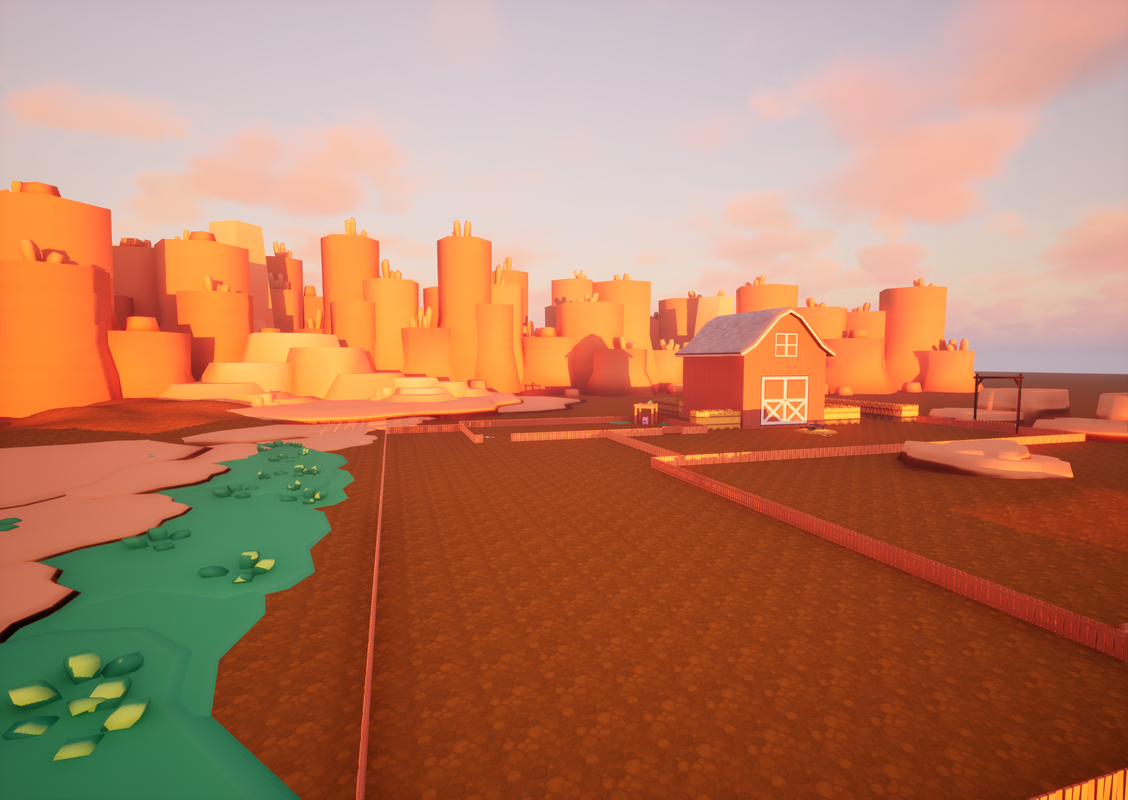
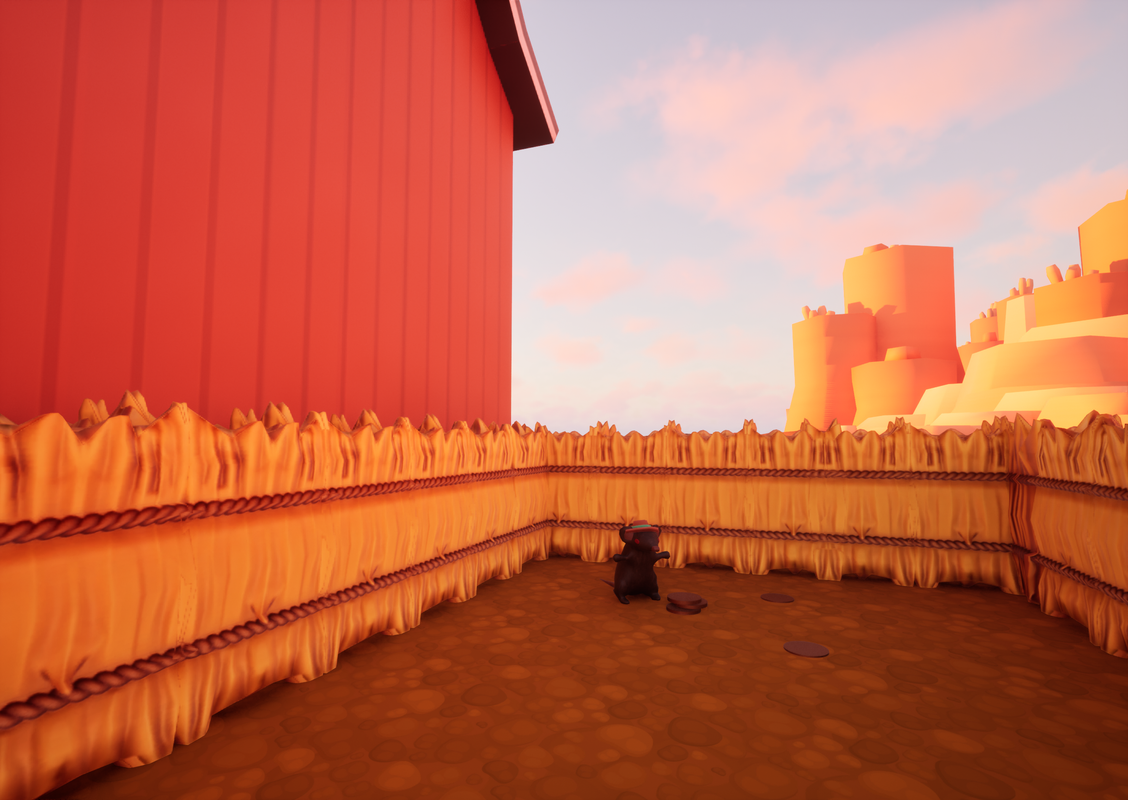
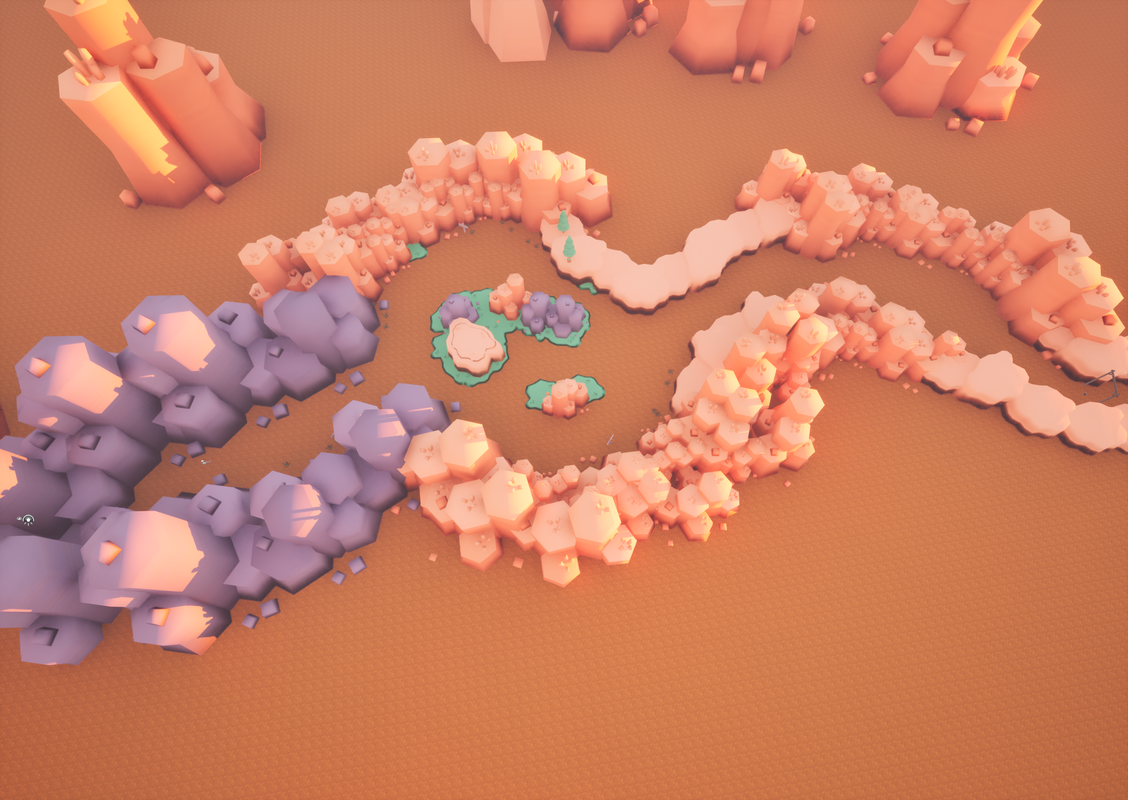
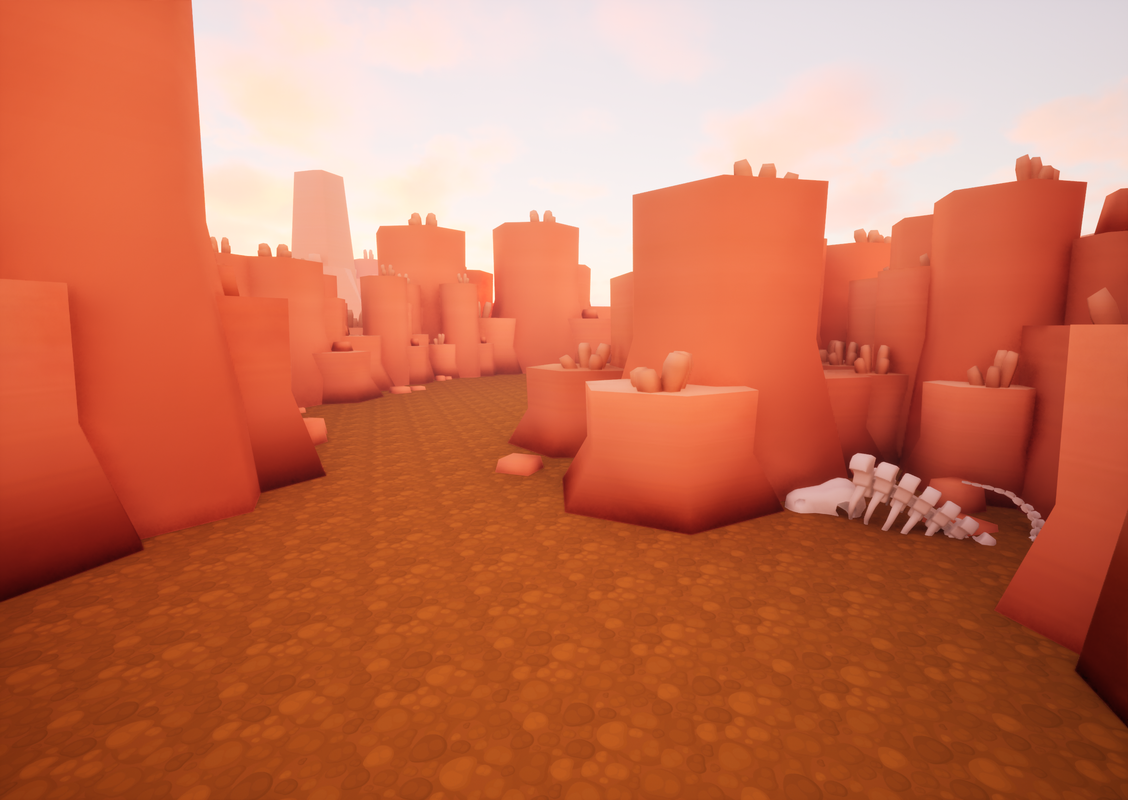
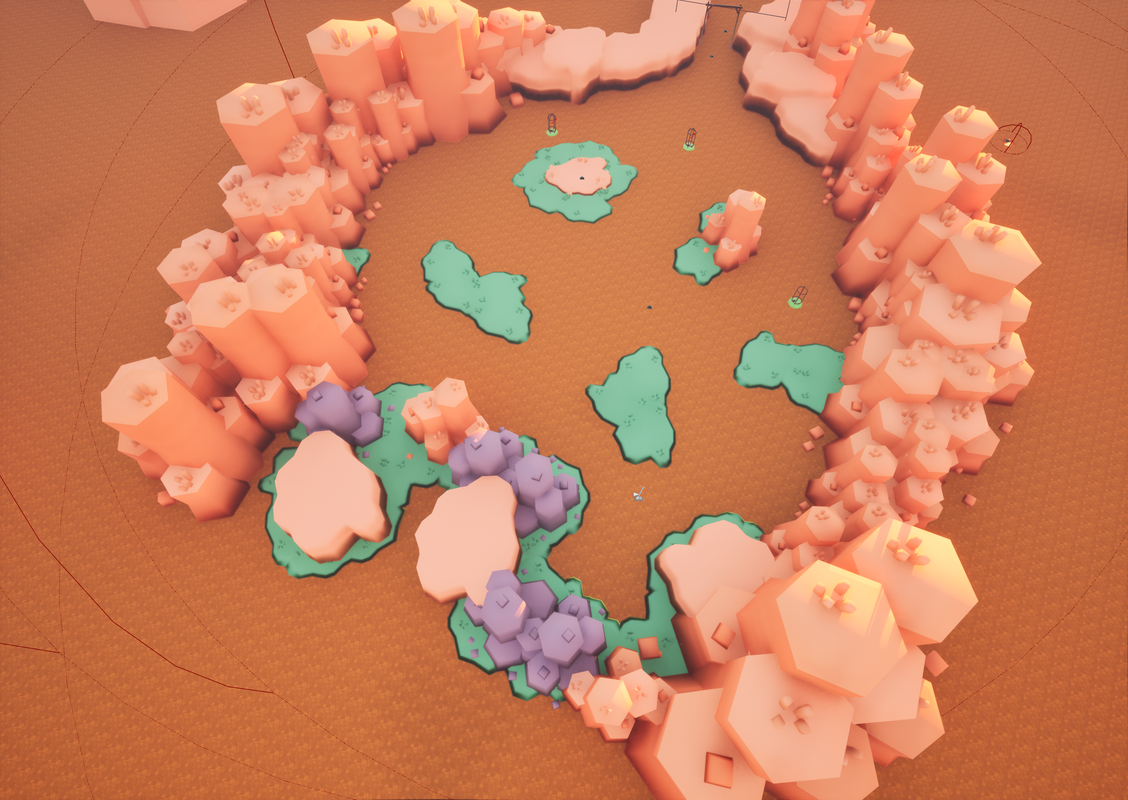
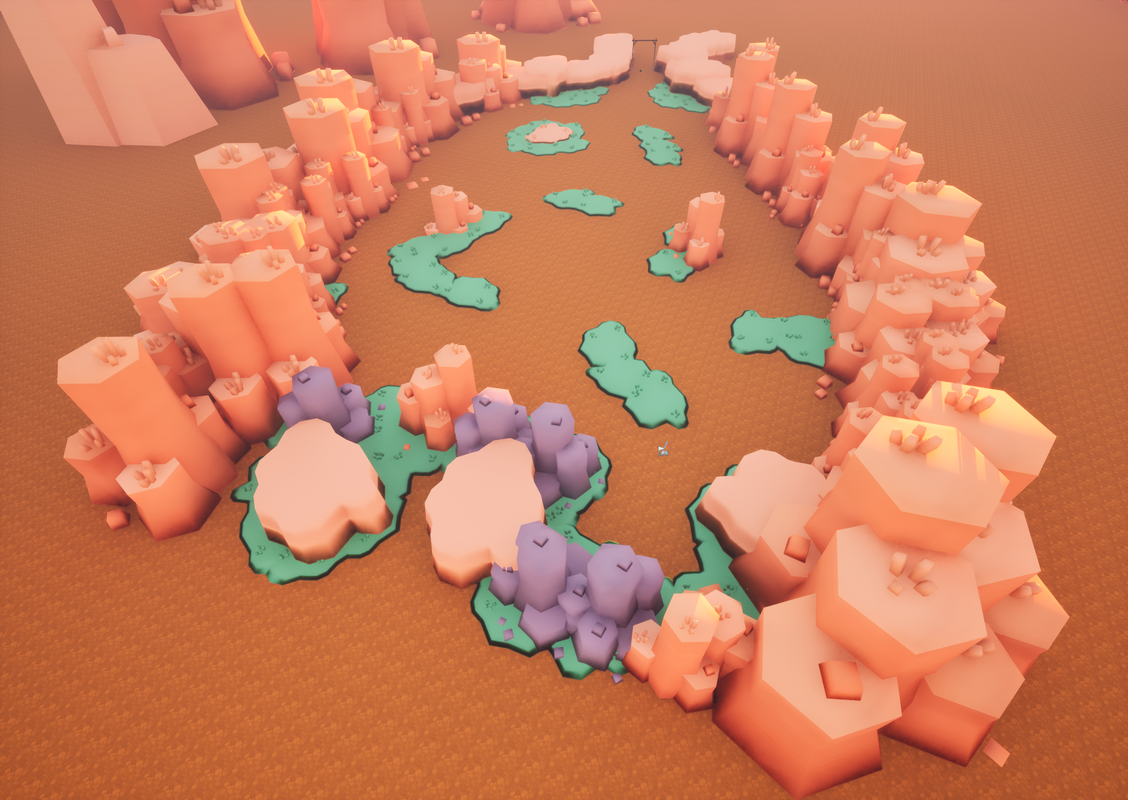
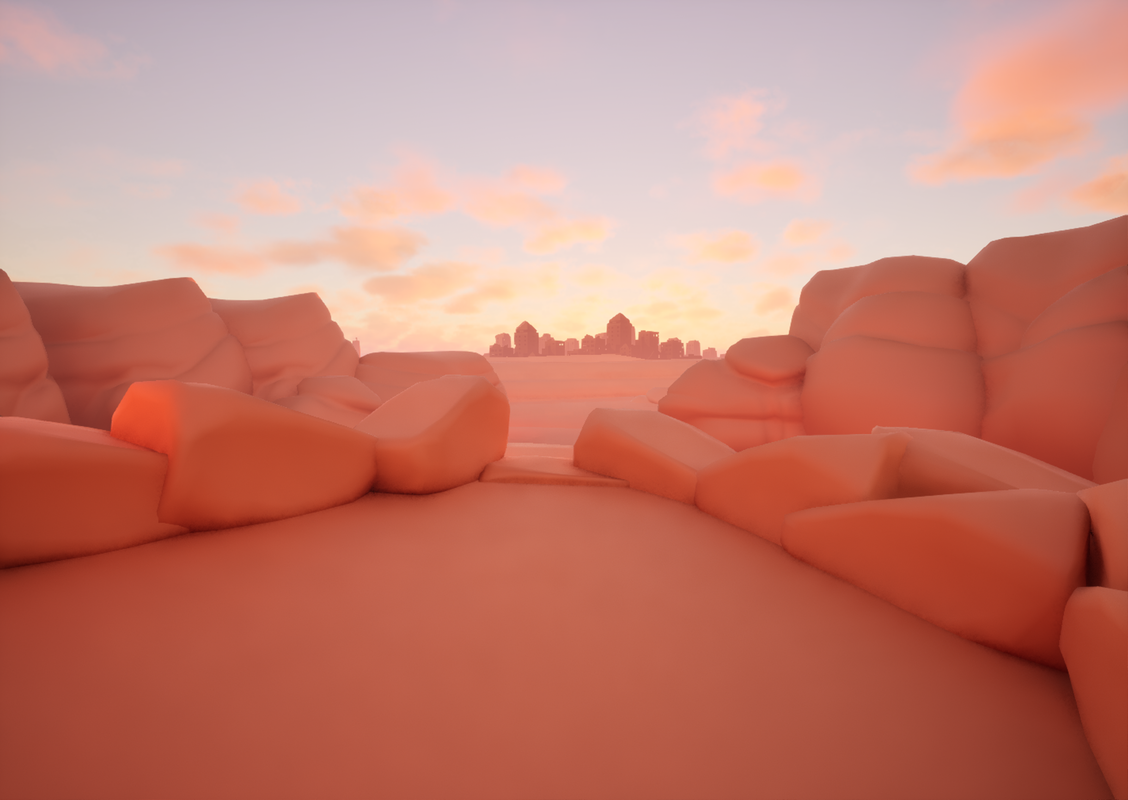
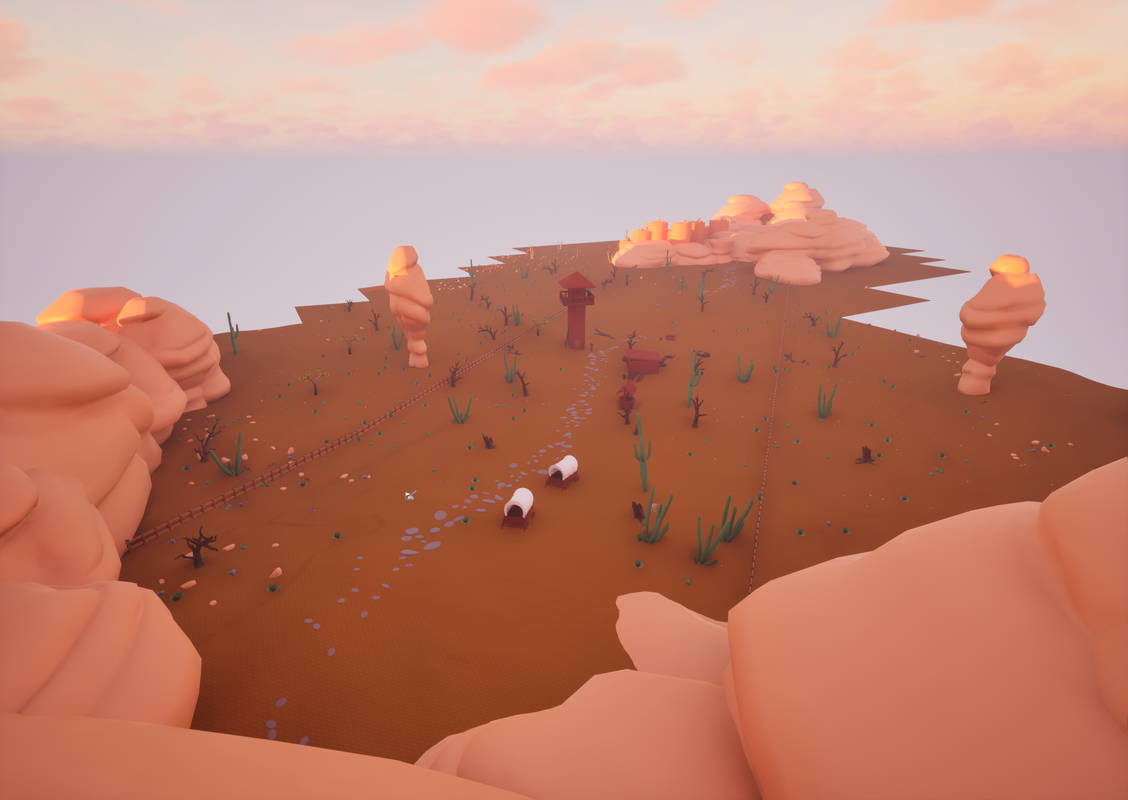
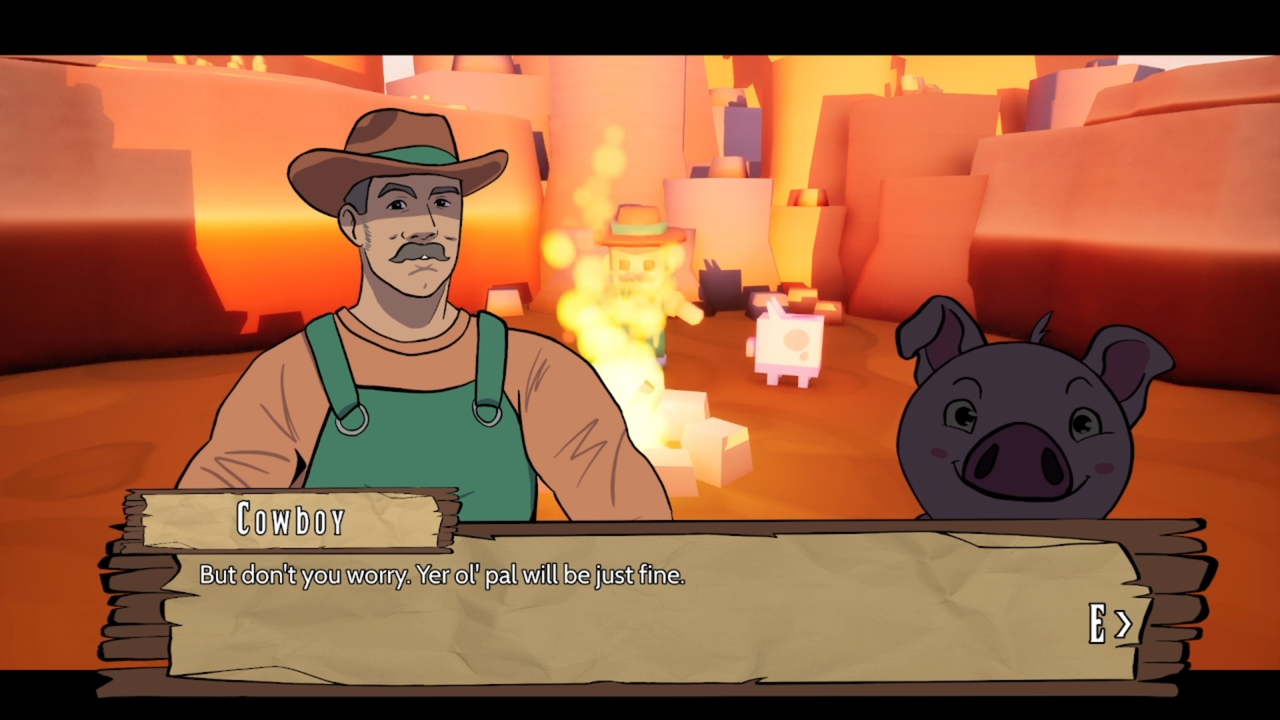
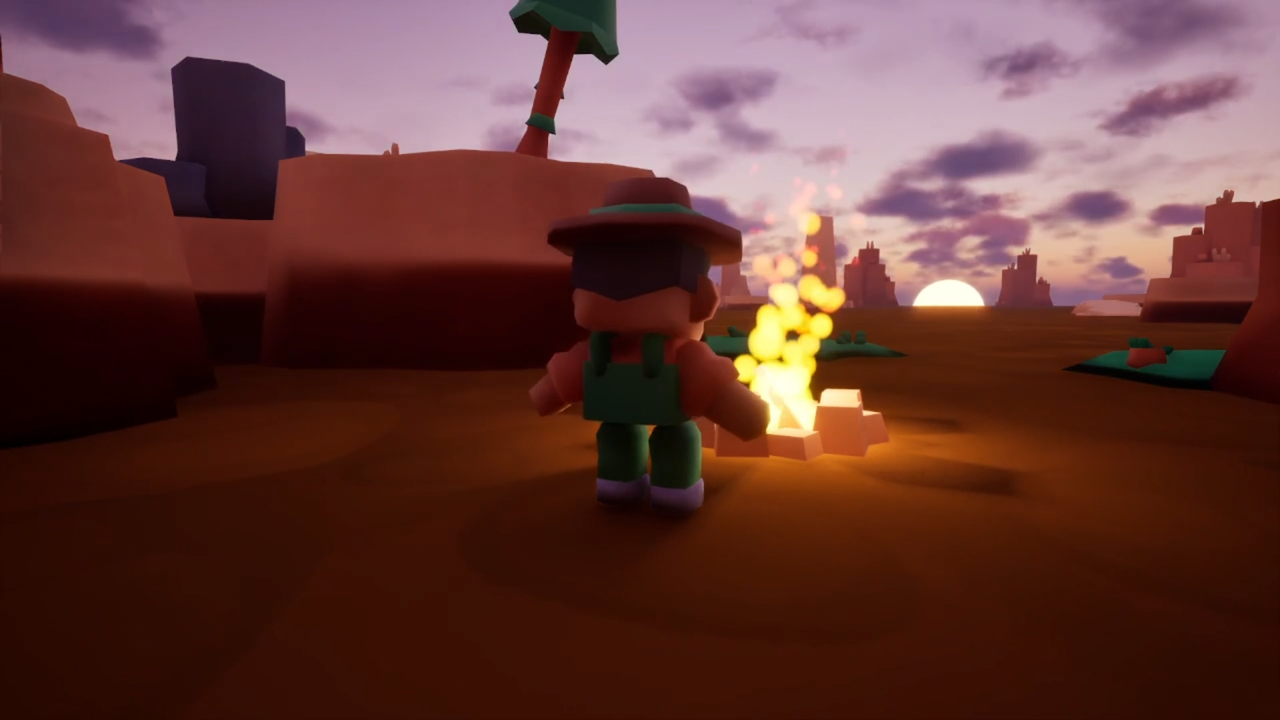
Story
Nights of the Living Pig follows a weary cowboy and their loyal pig, Little One, as they journey through a dying desert world plagued by famine. Each day they scavenge through canyons and ghostly towns, battling feral, zombie-like hogs called Zombhogs. Each night they rest by a campfire, where the game’s humor quietly seeps in through deadpan exchanges, sarcastic survival tips, and moments of warmth that make their slow decline feel more human.
The tone balances absurdity and tragedy. The cowboy treats the apocalypse like routine farm work, joking about cooking bacon while starving to death. Little One doesn’t speak, but the cowboy talks to them as if they understand, the humor coming from how normal they try to make the end of the world feel. It’s darkly funny, but grounded in care and loneliness.
Endings
The story concludes with two branching endings. In one, the player chooses to eat Little One to survive. The fire burns bright, the screen fades with the sound of sizzling, and the world goes quiet. In the other, the cowboy refuses, lying down beside them as the fire fades out. The final shot shows the same horizon town in the distance, still unreachable, a bittersweet end that turns survival into a moral choice.
Characters
- The Cowboy: Stoic, stubborn, and increasingly delusional. They hide their fear behind dry humor and old habits, talking to Little One like an old friend just to fill the silence.
- Little One: A small, pink pig who never speaks. Their innocence and loyalty humanize the cowboy, grounding the story emotionally. They become both companion and temptation as hunger grows.
Level Design
I built the full playable sequence: the ranch tutorial, three distinct reusable combat zones, and the final walking level. Each map was designed to express a specific mood; early levels focused on readability and rhythm, while later levels emphasized emptiness and fatigue. The final walk was built to evoke false hope through a peaceful sunset and faint town on the horizon, leading directly into the final choice scene.
October 28th, 2025
BioShock FPS Level — Metrics Gym
The first part of my BioShock-inspired level project in Unreal Engine 5.6. This Metrics Gym established the foundation for player scale, combat balance, and environment readability in a first-person shooter. I scripted doors, UI elements, and a functional shooting range to validate design metrics before full level production.
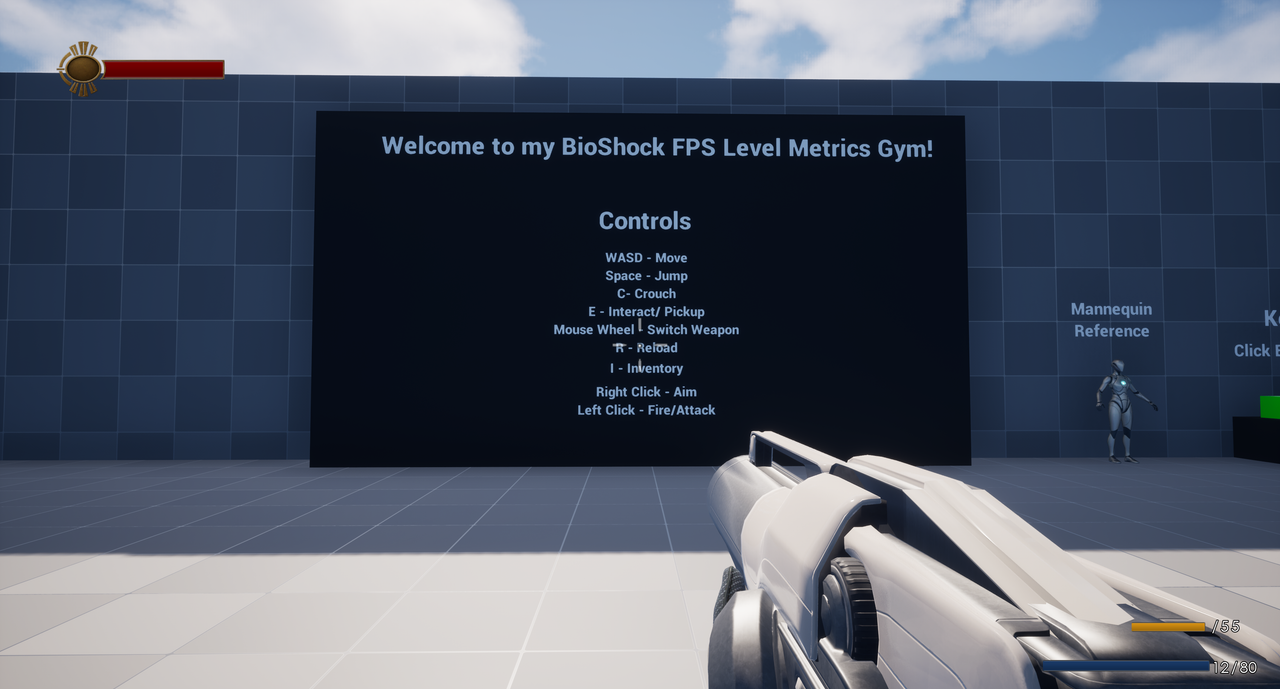
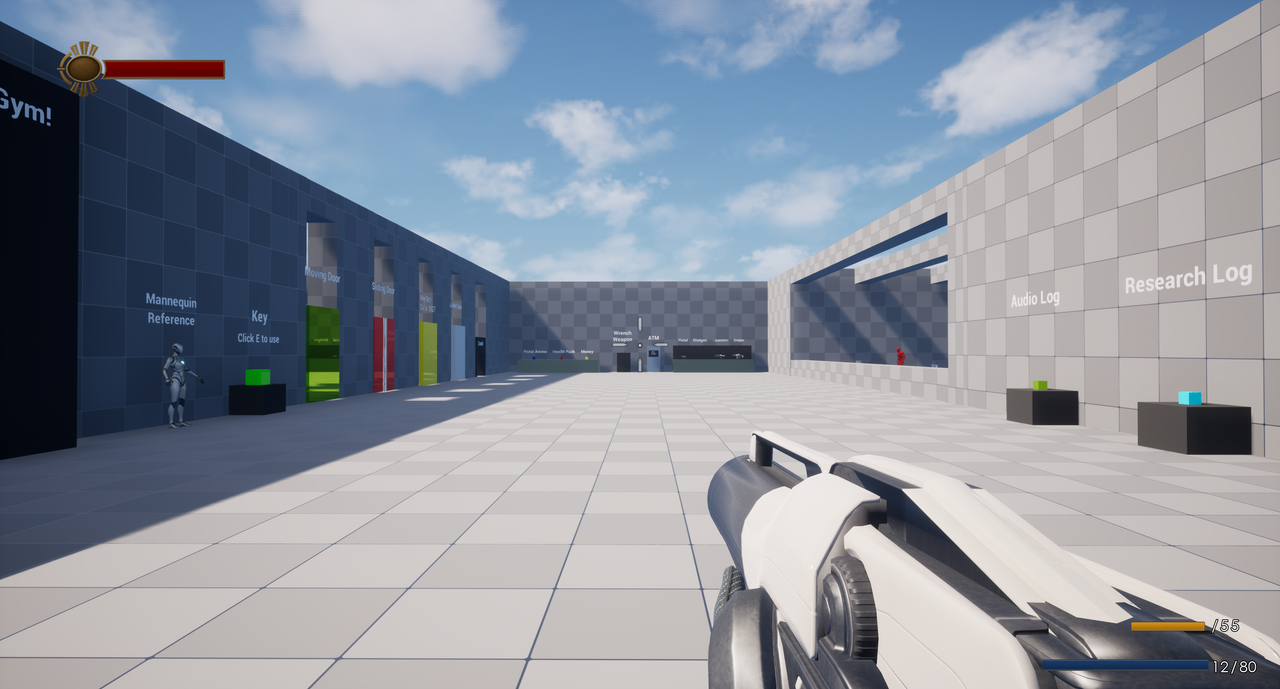
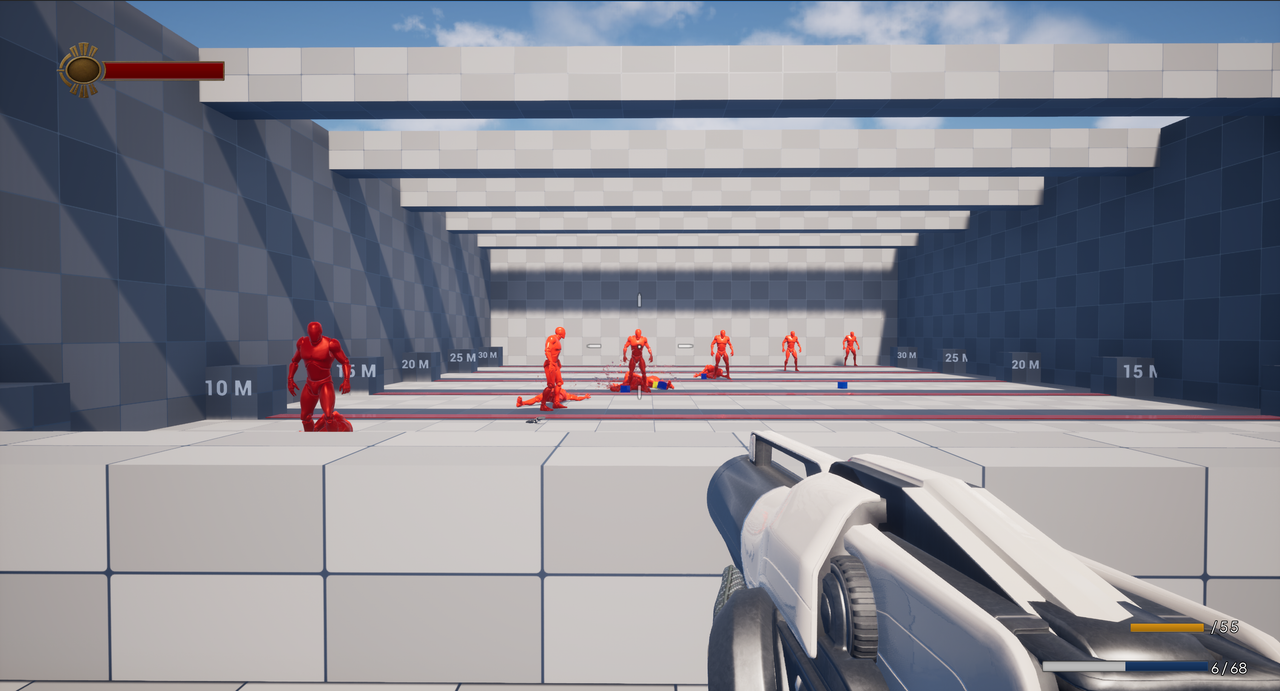
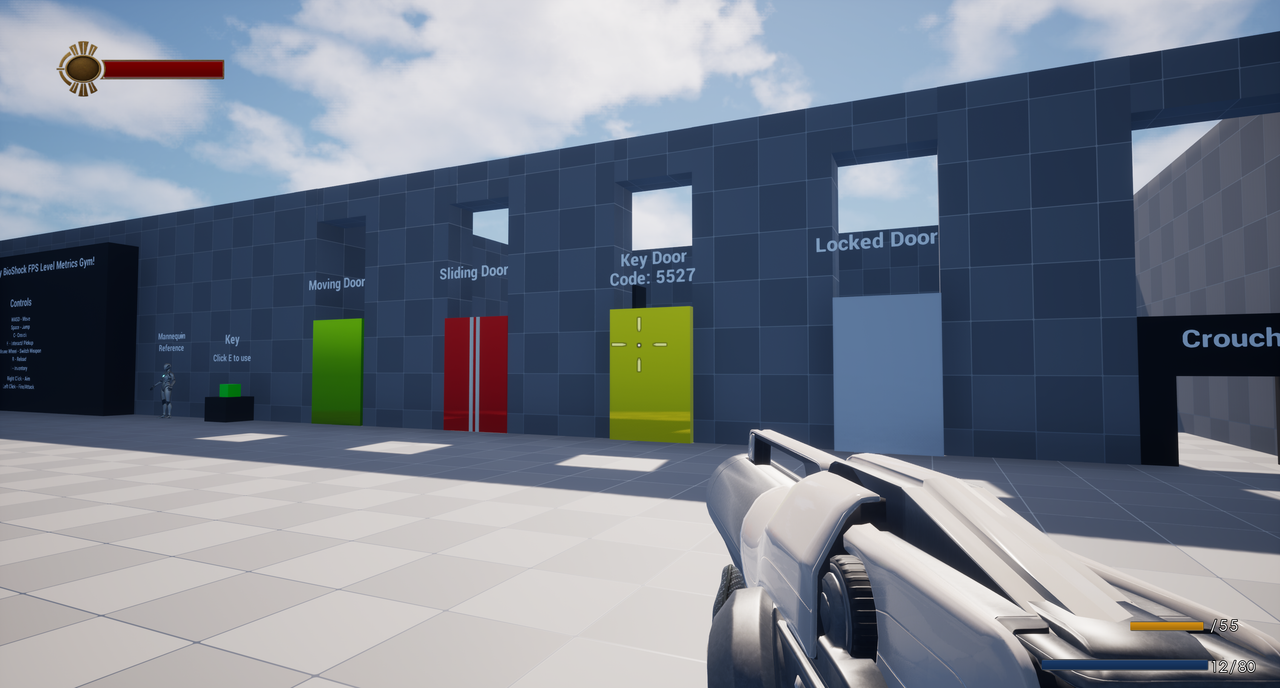
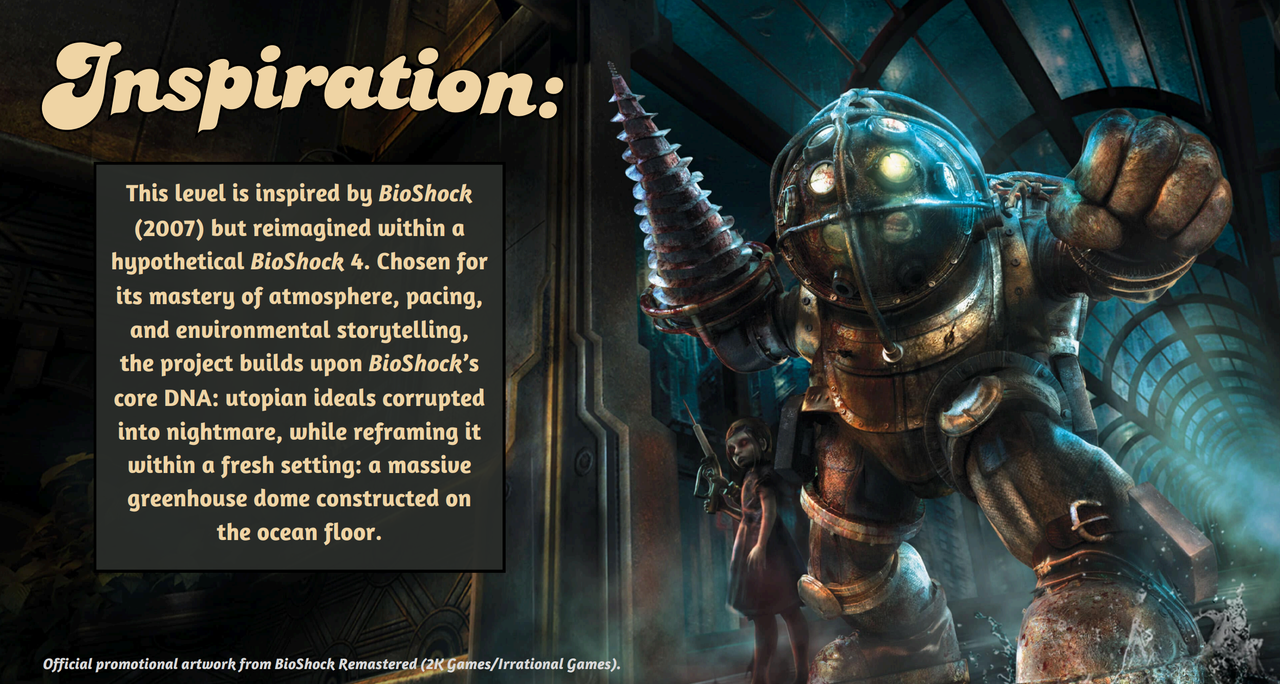
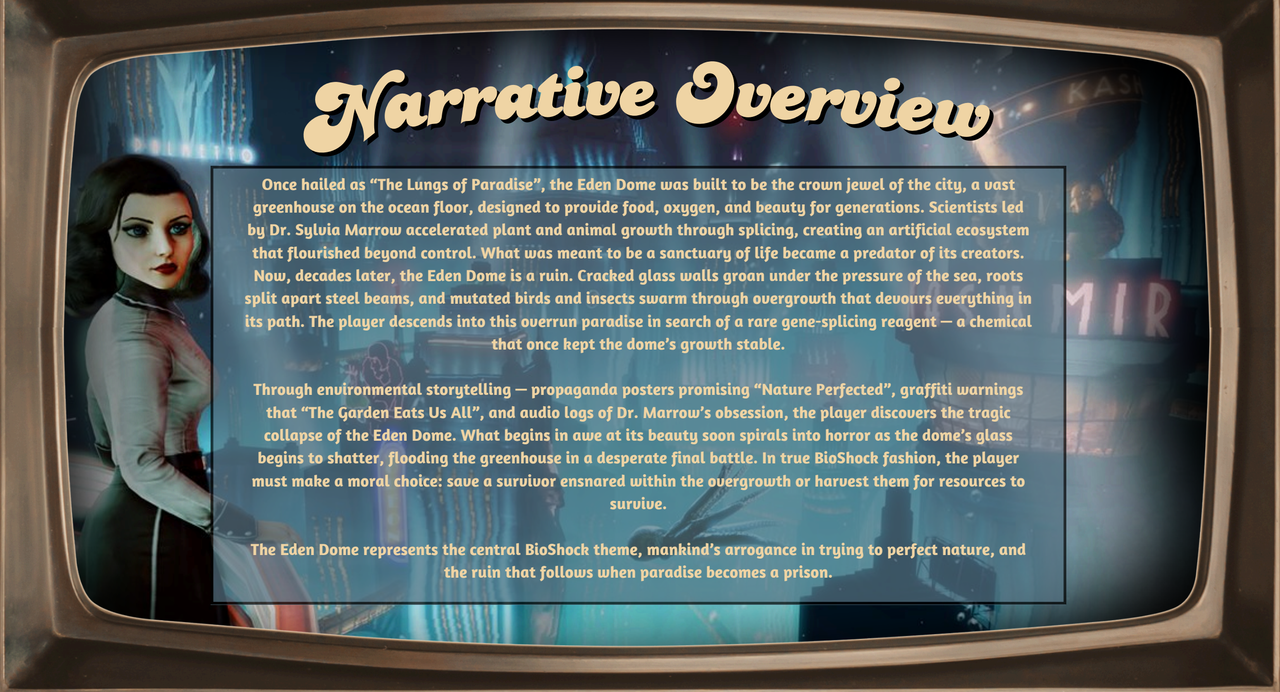
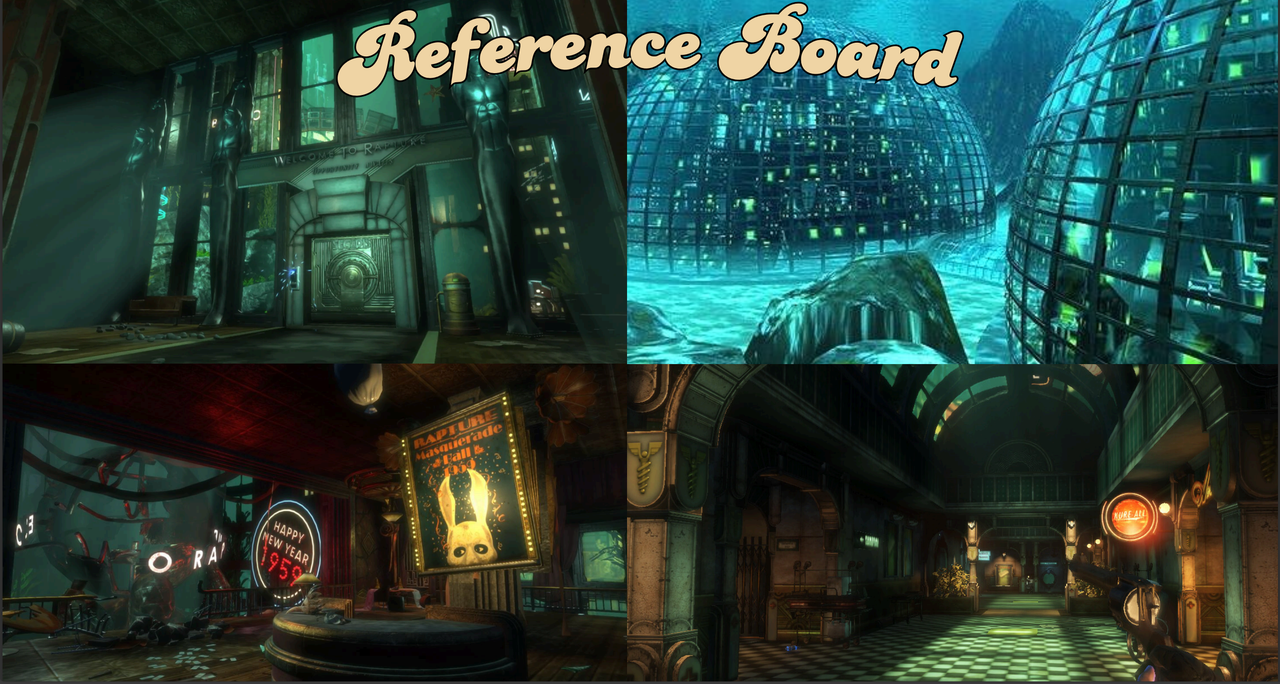
Overview
The Metrics Gym served as the first stage of my BioShock-inspired level project. It was built to establish reliable gameplay metrics inside Unreal Engine 5.6, ensuring that the player’s movement, combat distances, and environmental scale felt authentic and readable in first-person. This foundation guided all future blockouts and encounter designs in the larger BioShock FPS level.
Key Features
- Functional shooting range to test enemy engagement distances and respawn behavior.
- Custom BioShock-style UI for health and status feedback.
- Scripted door systems, including a working key-door inspired by BioShock.
- Grid materials and text renders for measuring player and combat metrics.
- Control board explaining mechanics and player input mapping within the level.
Implementation
Built using the Unreal Engine 5.6 first-person template, this Metrics Gym used Blueprint scripting to create simple systems that tested the pacing, feel, and clarity of gameplay spaces. It was an important step in validating player feedback and scale before moving into full environment construction.
October 17th, 2025
Dracula Blockout (Practice)
A gothic investigative puzzle-adventure blockout built in Unreal Engine 5.6, structured as a clear beginning–middle–end: alleyways → graveyard → castle. Players interview wary NPCs, navigate a key-gated graveyard, and push toward a final castle reveal that sets up the confrontation.



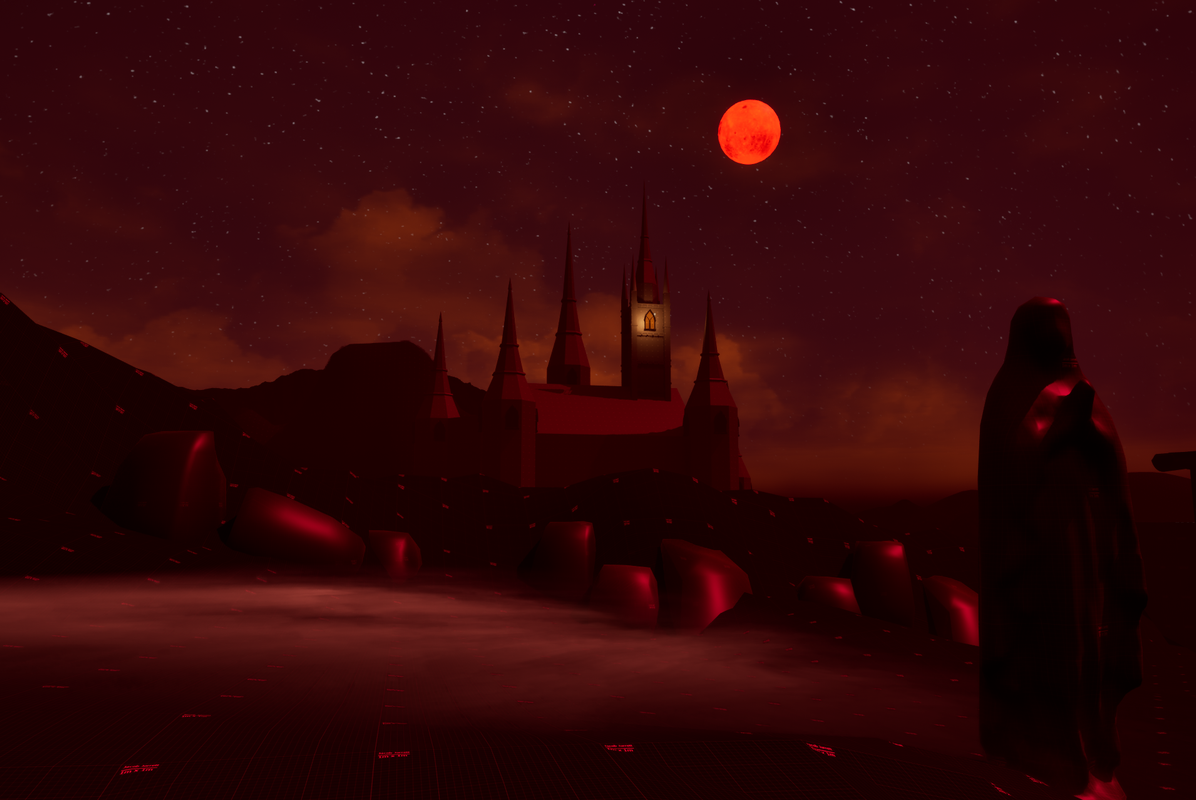

Premise
The town is quiet for all the wrong reasons. Doors are bolted, curtains barely part, and every alley seems to bend toward one silhouette on the hill: the castle. You step into the role of private investigator Johnathan Harker, following a string of disappearances the locals refuse to acknowledge out loud. The blockout’s goal was to capture that mounting unease in three beats—narrow alleyways, a tense graveyard hub, and finally the looming presence of Dracula’s castle.
Purpose of the Blockout
This project was about rhythm, pacing, and making sure each space communicates a distinct kind of tension. The alleyways pull you in tight, guiding the player with boarded-up windows and NPC voices. The graveyard lets you breathe for a moment but blocks progression with a simple key-gate puzzle. And the castle closes the loop with a clear destination and controlled interior framing. The emphasis throughout was keeping navigation obvious so the focus stays on investigation, not guesswork.
Design Notes
The blockout builds tension by controlling what the player can see. In the alleys the turns are sharp and the boarded windows make the space feel uneasy, with NPC voices adding to that tone. The graveyard changes the pace, giving the player more room but still guiding them toward the central gate. Reaching the castle slows things down again, as the scale of the approach creates atmosphere and builds anticipation before stepping inside.
If I iterate further, I want the alleyways to feel more like lived-in streets—more doors, clutter, and signs of daily life. Right now they sell navigation, but they don’t yet convince as spaces people actually occupy. I’d also tune a couple of choke points that punish turns too sharply, and give the graveyard better bounds so the player doesn't wander off.
Build & Time
Built in Unreal Engine 5.6 with the Third-Person template. Everything stayed graybox—1 m grid, mannequins, quick proxy shapes—for speed and clarity. The blockout took about 10 days of work.
October 8th, 2025
Milky Way Kitchen — Finished Prototype
An educational VR game built for the Meta Quest 3. This milestone covers the finished level build, the programming and systems I developed, and our full voice-over session.
Full Walkthrough





Premise
You play as Food Engineer #127, a junior culinary researcher aboard the Milky Way Kitchen. Under the eccentric guidance of Professor Quackenbush, your mission is to prepare a proper human meal called chicken parmesan for the lab’s only test subject: a slightly bewildered Earthling named Jake. Framed as a lighthearted culinary experiment, the task challenges you to follow safe cooking practices while navigating the quirks of an alien kitchen. From washing and prepping ingredients to cooking chicken to the correct temperature, every step becomes both a scientific trial and a playful lesson. The goal isn’t just to impress Jake with an edible plate, but to prove that interstellar chefs can master human foods while upholding the highest safety standards.
Level Design
I built this level to mirror safe kitchen practice in its flow. You move naturally from washing to prepping, then cooking, baking, and finally plating, with voice-over cues helping guide the pace. Counter heights and appliances were scaled against a reference mannequin so everything feels right in VR, both reachable and believable. Key interactables are staged with strong silhouettes and accent lighting, making the next task easy to spot without breaking immersion.
Programming I Contributed
- Hand-Wash Timer & Faucet Logic: trigger-based detection drives a progress timer, particle effects, and audio cues; progress persists if the player steps away briefly to avoid cheap resets.
- Shaker Logic: Created shaking mechanic for breading and cheese. After a warm-up delay, ingredients sprinkle steadily, keeping timing clear and tactile in VR.
Models & Assets I Created
I modeled several core pieces of the kitchen: the sink, the Earth backdrop visible beneath the transparent floor, the roof dome, floor tiles, portrait decorations, and glass materials. These set the stage for the alien-lab-meets-kitchen tone and provided a readable space for interaction.
Writing & Performance
I wrote the entire voice script, blending instruction with humor across three characters: Prof. Quackenbush (science-forward facts), Cow E (deadpan sidekick), and Jake (warm, grounded encouragement). The script reinforces why each action matters, from preventing cross-contamination to cooking to safe internal temperatures and handling tools correctly, while keeping the tone lighthearted. We recorded in the professional-quality FIEA audio booth with three teammates in roles. I also performed as Jake. During our class presentation, the script not only landed with consistent laughs but also made the lessons memorable and engaging.
Design Notes
- Pacing: steps are short, solvable beats with audible and visual confirmation. No single action overstays its welcome, keeping momentum lively.
- Theming: Earth visible beneath the transparent floor gives the kitchen a unique “orbiting laboratory” vibe, while also providing a stable horizon for VR comfort.
- Clarity: stations form a clean, legible critical path. Optional props and decorations live in side pockets, adding flavor without distracting from progression.
October 2nd, 2025
Milky Way Kitchen — Work in Progress
Educational VR cooking experience set aboard a UFO kitchen. Current focus: blockout iteration and layout refinement.
Concept
Milky Way Kitchen is a VR cooking game designed to teach safe and confident cooking through interactive recipes. The project blends educational value with an imaginative alien twist, guided by characters like Prof. Quackenbush, Cow E, and Jake. The game’s first recipe challenge: chicken parm.
Progress
This week’s milestone was moving from the initial sketch into full blockout form inside Unity. I started with a rough drawing of the UFO’s kitchen layout, then translated it into 3D space. Early passes helped establish proportions, counter placement, and the player’s interaction zone. The most recent iteration refined circulation flow and made sure key objects like the oven, sink, and stovetop felt comfortable in VR scale.
Educational Focus
While the UFO theme sets a fun tone, the real emphasis is on teaching fundamentals of cooking and safety: washing hands, using heat properly, and following recipes step by step. Voiceover guidance from Prof. Quackenbush will tie gameplay to science-based cooking facts, while Jake and Cow E add humor and personality.
Next Steps
- Refine interaction points (sink, oven, stovetop) for VR usability.
- Implement voiceover cues tied to each recipe step.
- Continue iterating on blockout to balance fun alien theming with clear educational goals.
September 25th, 2025
TLoU Part II — Abby Day 3: Sniper (Opening Stretch)
Rebuilt the first segment of the sniper chase in UE 5.6 with an emphasis on vehicle footprint, lane width, and push-cover cadence.




Scope
I rebuilt the opening street of Abby’s Day 3 sniper encounter, focusing on the first approach: the lanes, parked cars as cover, and the early push-across beats. My goal wasn’t just to copy the look of the street, but to capture the same rhythm of movement and exposure that makes the sequence tense.
Approach
I grounded the layout with the UE mannequin and a 1 m grid, starting with car proxies. Once the vehicles felt right in scale, the lanes, curbs, and crossing distances naturally followed. Cover was arranged to create that push-and-pause cadence: sprinting across an opening feels risky, but reaching the next car is a relief.
Sightlines took the most iteration. Even small rotations of a car changed how long players were exposed to the sniper. I tuned these angles until the timing felt right. The street itself acts as the main path, while sidewalk pockets and vehicle gaps give small moments of safety without breaking the forward pressure.
Metrics
- Strong cover points about 2–3 seconds apart when sprinting
- Smaller dips closer to 1–1.5 seconds (sometimes near 10 seconds total under continuous fire)
- Car hoods and trunks lined up with crouch vs. stand peeking
- Corners set up for slice peeks without full exposure
What I learned
Blocking believable vehicles first made everything else click into place. Orientation mattered as much as position, since a slight yaw could change exposure timing more than shifting a car. A clean blockout with bold silhouettes read faster than dropping in detail too early. And walk-testing with the mannequin exposed issues the top-down plan didn’t, especially with crossing distances that looked fine on paper but felt punishing in motion.
Time & tools
The blockout came together in about ~10 hours using Unreal Engine 5.6. Starting with scaled car proxies and a simple grid gave me clear anchors to build from, and the quick turnaround showed how much clarity you can get from basic tools when the focus stays on readability and timing.
September 18th, 2025
Space Escape — Finished Prototype
A sci-fi escape room with fully original puzzles and assets.
Frequency Puzzle (Designed and Programmed by me)
Power Grid Puzzle (Designed and Programmed by me)
Story
You wake up to find your crewmate missing. The ship’s corridors carry strange, alien sounds that seem to echo from the vents and bulkheads. With systems failing and something unknown aboard, you must solve the room’s puzzles to break the lockdown and escape before it’s too late.
Level Design
I designed and dressed the room so players naturally move from one puzzle to the next. The entrance frames the first interactable in a way that draws the eye, and each solved puzzle reveals or hints at the next, keeping momentum consistent. To reinforce this flow, I leaned on strong sightline anchors like terminal lights, cable runs, and bold silhouettes that catch attention from across the space and point toward the next step. These cues make goals easy to spot without the need for heavy-handed markers. Secondary dressing plays a different role. While the anchors pull you forward, smaller environmental details set the tone of the space. I was careful to place them where they support immersion but don’t compete with the interactables.
Puzzle Design & Implementation
I coded the entire Power Puzzle and Frequency Puzzle. The Power Puzzle handled tile rotation logic, path validation, state persistence, and feedback. The Frequency Puzzle exposes real-time parameter tuning (amplitude, frequency, phase) with responsive visual/audio feedback — both designed and implemented end-to-end.
Development
Everything in the prototype — from puzzle hooks to the room’s dressing — was built specifically for this experience, tuned to keep interaction points clear and the route forward obvious at a glance.
Reflection
In an escape-room, the hardest fail isn’t a tough puzzle — it’s a lost player. The room needs to point as much as it decorates. What worked here was maintaining a single, legible critical path with consistent breadcrumbs: next-step anchors in view, soft gates that open only after clear feedback, and dressing that frames interactables instead of hiding them. When players always know “where to go next,” they can spend their attention on solving instead of searching.
September 9th, 2025
Nebulooters — Card Game Prototype
A fast-paced code-breaking and bluffing game of space piracy, sabotage, and survival.
Concept
Nebulooters is a competitive card game where players take on the role of rival space captains, racing to crack codes and loot encrypted star maps. Our theme — cosmic piracy — shaped both the mechanics and the visual language, tying gameplay to the high-stakes fantasy of treasure hunting in deep space.
Gameplay
Each player receives a secret keycode and works to manipulate the shared Terminal by playing Cipher Cards and Utility Cards. When a player’s keycode matches the symbols or colors in the Terminal, they can fire their cannon at an opponent. Each captain has three lives — the last surviving crew claims victory.
Design Process
We iterated quickly through playtests, starting with simple matching mechanics and gradually introducing Utility cards like Shields, Skeleton Keys, and rule modifiers to keep the game dynamic. Testing sessions let us balance card distribution and clarify the rules sheet for smoother play. The “Captain’s Log” added narrative immersion, giving context and story stakes to the otherwise abstract mechanics.
Reflection
Working on Nebulooters showed us how crucial theme and clarity are in board and card game design. The combination of clean iconography with a strong narrative hook created a game that was easy to pick up yet strategically rich. By the end of RPP 1, we had a prototype that felt polished, fun, and uniquely ours.
